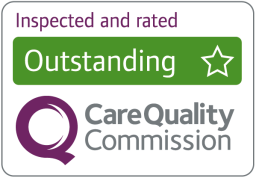HPV and HSV: What’s the difference?
Although they have very similar names, HPV and HSV are 2 different things.
HPV is human papillomavirus.
HSV is herpes simplex virus, otherwise known as genital herpes.
You can see why people get them mixed up. Not only do they have similar names, but both infections can spread through sex and close skin-to-skin contact. But they’re very different infections. Here’s how to tell the difference:
If someone has HPV, it most likely means they have genital warts. Or they’ve found out they have a different strain of HPV, the one that cervical screenings (smear tests) test for.
If someone has HSV, they have an infection that causes cold sores or genital herpes.
Let's talk about HPV first
There are thousands of different types, or strains, of HPV. Most are harmless, clear up by themselves and don’t cause any problems. If you’re sexually active, it's likely you will come across HPV and not even know, because our bodies clear it easily.
But some more troublesome strains do cause issues in our bodies. There are strains that cause genital warts. And other strains can cause cancers (cervical cancer, and rare forms of head, neck and anal cancers).
When you have your smear test, you’ll be tested for the strain of HPV that can cause cervical cancer.
There’s an HPV vaccine called Gardasil 9 that protects you from these strains. You might’ve already been vaccinated because it’s been offered to everyone aged 12 to 13 since 2019. The HPV vaccine is free on the NHS if you’re under 25, and if you’re a man who has sex with men you can get it free up to the age of 45. You can also pay to get it done privately at some clinics.
What are genital warts?
These are small fleshy growths, bumps or skin changes that appear on or around the genital or anal area. They are spread by sexual contact and skin-to-skin touching.
Genital warts are incredibly common. Up to 80% of the population has made contact with the HPV strain that causes them but never seen any symptoms because our bodies are very adept at fighting the virus.
So what is HSV?
HSV stands for herpes simplex virus. It’s more often known as genital herpes.
There are 2 types:
HSV 1 causes sores found on the mouth (known as cold sores) and genitals
HSV 2 which causes genital sores only (genital herpes)
What do the genital sores look like? They’re small, fluid-filled blisters. You’ll notice them anywhere in the genital or anal area, including the buttocks and the tops of the thighs.These blisters burst after a few days, leaving small red sores which can be painful
You may get stinging, itching, tingling or pain in the area before the sores appear.
When there are noticeable blisters, it’s called a herpes outbreak. These can be triggered by anything that affects your immune system. Smoking, pregnancy, your period, feeling unwell or stressed - these can all affect your immune system and make it harder for your body to fight the HSV virus.
Like HPV, HSV is common. Most people will have come across the virus at some point in their lives. It cannot be cured, as the virus stays in your system. But only a small percentage of people who get it will see symptoms or have an outbreak.
There are antiviral treatments available for herpes which can help stop the outbreaks or reduce how long an outbreak lasts.


